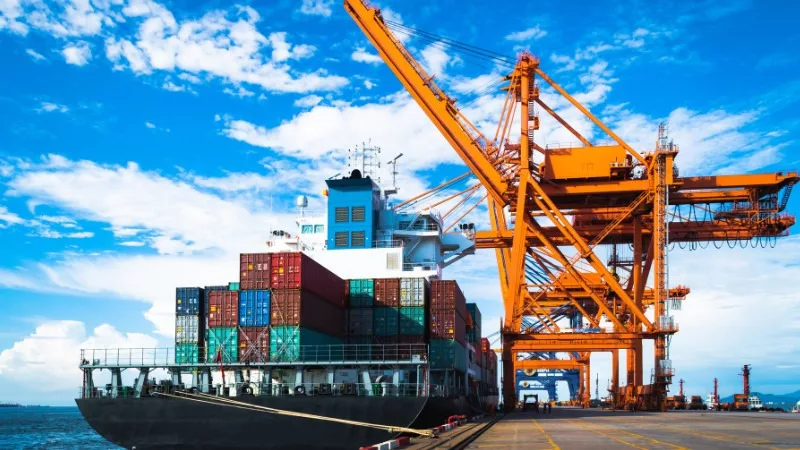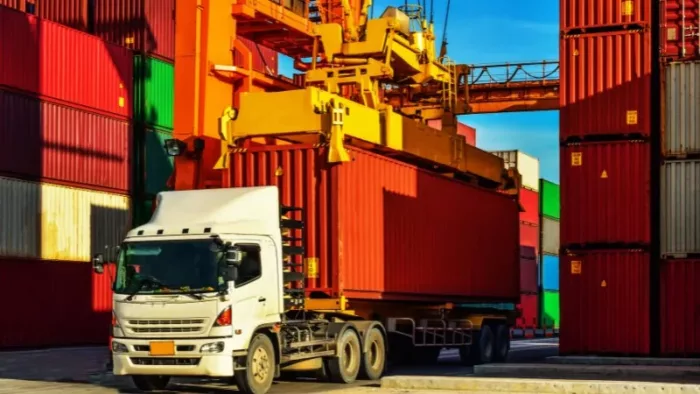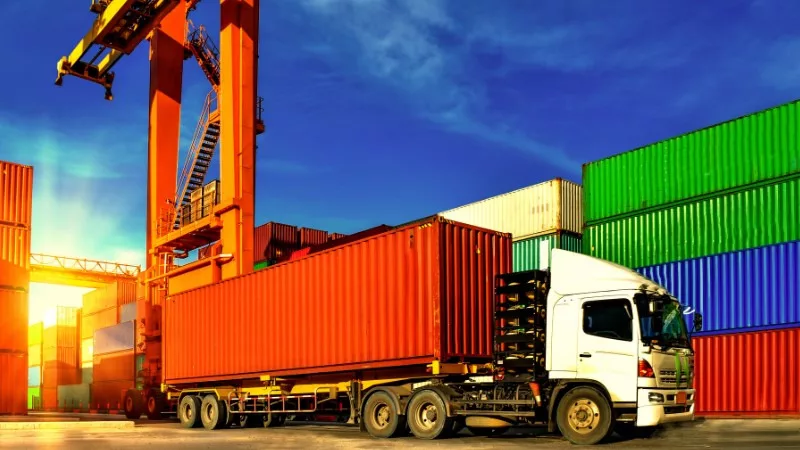Overview of Shipping from China to Cambodia
When shipping from China to Cambodia, you’ll need to be aware of the trade terms, such as EXW (Ex Works), FOB (Free on Board), CIF (Cost, Insurance, and Freight), and DDP (Delivered Duty Paid). Different trade terms will determine which party is responsible for the various costs and risks involved in the shipping process.
Before accepting any delivery, make sure to:
- Check if the items can be sent (some products might be prohibited in Cambodia)
- Conduct a quality check to ensure the goods are not damaged or malfunctioning

Loading and Arrival Ports
Port of Loading
It’s important to choose the appropriate port of loading when shipping products. In China, several ports handle international shipping, including Shanghai, Shenzhen, Ningbo, Guangzhou, and others. Consider the following factors when selecting your port of loading:
- Distance: Choose a port that is close to your warehouse to cost the cheapest shipping rate.
- International shipping policies: Ensure that the port complies with the necessary policies and regulations.
- Cargo shipping capabilities: The chosen port should be capable of handling the type and volume of your cargo.
Port of Arrival
Sihanoukville Autonomous Port (SAP), a port of Sihanoukville, is the primary international gateway for maritime trade in Cambodia, located on the Gulf of Thailand.
When selecting the port of arrival, consider the following factors:
- Distance: Ensure that the chosen port is close to your final destination in Cambodia to minimize transportation costs.
- Policies and regulations: Be aware of import regulations and local policies for clearance of China shipping at the Cambodian port.
- Carrier options: Check if your preferred logistics company, such as OOCL, has services between the chosen ports in China and Cambodia.
Modes of Transport
When shipping from China to Cambodia, you have several transportation options to choose from. Each mode has its own advantages and disadvantages, depending on factors like cost, time, and volume of your cargo.
Air Freight
Air freight shipping is a fast and reliable shipping method if you need to transport goods quickly between China and Cambodia. There are three international airports in Cambodia:
- Siem Reap-Angkor International Airport
- Sihanoukville International Airport
- Phnom Penh International Airport
Shipping from China to Cambodia, in general, takes 1-3 days by air. The shipping costs range from $4 and $16 per kilogram.
Sea Freight
Choosing ocean freight as your shipping method can be a cost-effective solution, especially for large cargo volumes. Exports to Cambodia generally go through Sihanoukville Port, which is referred to as Sihanoukville. It is the only special economic zone in Cambodia. Sihanoukville Port is currently the largest port in Cambodia. Here is the transit time from China cities to Sihanoukville.
| Port of Loading | Transit Time |
|---|---|
| Tianjin | 16 days |
| Dalian | 15 days |
| Shanghai | 14 days |
| Qingdao | 15 days |
| Ningbo | 13 days |
| Hong Kong/Guangzhou | 12 days |
Rail Freight
Though not as common as air or sea freight, rail freight is another option for transporting goods from China to Cambodia. There are two railways towards Cambodia. One is the China-Vietnam Railway extending to Phnom Penh and Sihanoukville Port in Cambodia. The other is the China-Laos-Thailand Railway extending to Siem Reap, Phnom Penh, and Sihanoukville in Cambodia. The following is the transit timetable.
| Port of Loading/Port of Arrival | Sihanoukville / Phnom Penh | Battambang / Siem Reap / Sisophon |
| Shenzhen/Guangzhou | 6 days | 6 days |
| Xi’an | 9 days | 8 days |
| Qingdao | 10 days | 9 days |
| Ningbo/Shanghai | 9 days | 8 days |
| Beijing | 10 days | 9 days |
| Chongqing | 7 days | 6 days |
| Kunming | 5 days | 4 days |
| Nanchang | 8 days | 7 days |
| Harbin | 13 days | 12 days |
| Changsha | 7 days | 6 days |
Road Freight
Road freight is another mode of transport between China and Cambodia. It can be a versatile option as it allows for door to door delivery of goods, costing 32.1 USD per kilogram. Some logistics service providers like DHL Express offer road freight services for smaller shipments. Though it may not be as fast as air freight or as cost-effective as sea freight, road freight provides flexibility and easy accessibility for shipments that require more customized delivery options.
Understanding Shipping Costs
When shipping your goods internationally, it’s crucial to know the factors contributing to the overall shipping costs. The main factors impacting the cost shipping are as follows, the distance between the origin and destination points, customs clearance, packaging and handling fees, and logistics providers’ service fees. Furthermore, the shipping containers can be divided into FCL, which is called full container load, and LCL, which is called less than container load. The costs are as follows. You can choose the right container shipping service according to your demands.
| shipping containers | price |
| FCL | 1500 USD / container for 20’ 2500 USD / container for 20’ |
| LCL | 50 USD / CBM |

Significance of Freight Forwarding
It is crucial to choose the right freight forwarderfor international shipping. As a pivotal component of the logistics process, shipping agents make your shipping experience seamless and efficient.
By working with professionals, you can navigate complex international shipping regulations and customs procedures, ensuring your products arrive on time and in good condition. This, in turn, helps you maintain a competitive edge in your industry.
In terms of managing the transportation of your goods, a range of vital services are provided, including:
- Customs clearance
- Documentation handling
- Warehousing and storage
- Insurance services and risk management
- Cargo tracking and supply chain visibility
Make sure to find the right freight forwarding service for your cargo from China to Cambodia. Having the proper forwarder from China can help you find the best services for shipping, such as cheap air shipping, shipping ocean, and even door to door shipping.
Customs, Taxes, and Duties
Customs Clearance
When you’re importing goods internationally, it’s essential to understand the customs clearance process. As a member of the ASEAN economic and political community, Cambodia has facilitated customs barriers and procedures with China through the ASEAN-China Free Trade Area (ACFTA) agreement to enhance China – ASEAN free trade. To ensure a smooth import process, you should provide the necessary documents such as:
- Customs Import Declaration
- Commercial Invoice
- Packing List
- Road Transport Document (for land shipments)
- Bill of Lading (for sea freight from China)
- Import Permit
- Insurance Certificate
- Tax Certificate
- Certificate of Origin
- Company Registration
Having a customs broker can assist you in navigating this process and help shorten the average transit time.
Calculating Duties and Taxes
The import duty and taxes in Cambodia are calculated based on the CIF (Cost, Insurance, and Freight) method, which includes the value of the imported goods and the shipping rate.
Except for five categories of products such as natural rubber, gemstones, semi-finished or finished wood, seafood, and sand and gravel, general export goods are not subject to tariffs.
All goods are subject to import taxes when entering Cambodia, except those that enjoy tax-free treatment under the Investment Law or other special regulations. In addition to vehicles with special tax rates, there are five main tax rates for imported goods (including 0% tax rate):
(1) 0%: Goods that are not subject to tariffs according to government policy;
(2) 7%: primary products and raw materials;
(3) 15%: parts or semi-finished products used in machinery manufacturing;
(4) 35%: Products or finished products that are specially protected by the government;
(5) 50%: high-end luxury goods.
Under the common effective tariff system of the ASEAN Free Trade Agreement, products imported from other ASEAN member countries that meet the rules of origin can enjoy lower tariff rates. According to the overall tariff reduction schedule, with the exception of a few special commodities, Cambodia’s tariff rate will be reduced to 0-5%.
The tax rates for some imported products are shown in the table below:
| Cargo category | tariff | special tax | VAT |
| cloth | 35% | - | 10% |
| clothing | 35% | - | 10% |
| Children’s clothing, sportswear | 7% | - | 10% |
| Curtains, bedspreads | 7% | - | 10% |
| umbrella | 7% | - | 10% |
| cigarette | 50% | 10% | 10% |
| beer | 35% | 10% | 10% |
| Wine, spirits | 35% | 33.33% | 10% |
| drinks | 35% | 10% | 10% |
| can | 35% | - | 10% |
| fruit | 7% | - | 10% |
| tea | 7% | - | 10% |
| Meat (fresh, frozen) | 35% | - | 10% |
| fish | 15% | - | 10% |
| drug | - | - | 10% |
| Student stationery | - | - | 10% |
| Toys | 7% | - | 10% |
| Game consoles | 50% | - | 10% |
| antiques, art | - | - | 10% |
| Home appliances | 15% | - | 10% |
| Motorcycles below 125cc | 15% | 5% | 10% |
| 125cc and above motorcycles | 15% | 45% | 10% |
| Precious metals (gold, silver) | 30% | - | 10% |
| Diamond | 50% | - | 10% |
| farm tools | - | - | 10% |
| Other hardware products | 15% | - | 10% |
| plastic products | 7% | - | 10% |
| dynamo | 15% | - | 10% |
| Paper | 7% | - | 10% |
| cement | 7% | - | 10% |
| steel | 7% | - | 10% |
| Glass | 7% | - | 10% |
| Aluminum | 7% | - | 10% |
| fertilizer | - | - | 10% |
| Petrol and diesel | 30% | - | 10% |
| Engine oil, lubricating oil | 30% | - | 10% |
Understanding HS Code
An HS (Harmonized System) code is an internationally standardized system of numbers that classifies traded products. Knowing the correct HS code for your goods is essential for calculating duties and taxes accurately and ensuring smooth customs clearance.
Each HS code consists of six digits. The first two digits represent the chapter (product category), the next two digits represent the heading (product sub-category), and the final two digits specify the sub-heading (specific product type). For example, HS Code 8539.50 refers to electrical filament lamps.
Make sure to include the proper HS code on your shipping documents as this will help prevent delays or additional rates to Cambodia during the customs clearance process.
Important Documents for Successful Shipping
Commercial Invoice
A commercial invoice contains detailed information about the shipped goods, including their value, description, and origin. This document assists customs authorities in determining the duties and taxes you must pay for your cargo and freight.
Packing List
The packing list should include information about the freight shipping contents, such as the number of packages, dimensions, weight, and any other relevant details. A detailed packing list in both English and the local language is essential for proper customs clearance.
Certificates of Origin
Certificates of Origin, whether preferential (GSP Certificate of Origin) or non-preferential, are critical documents in the shipping process. They authenticate the goods’ origin and are often required by the destination country to apply preferential tariffs.
Required Import/Export Documents
It’s crucial for you to know and prepare the required import/export documents to avoid delays and additional costs. Depending on your specific goods, additional permits, licenses, or certifications may be necessary. Ensure you comply with all relevant regulations of both China and Cambodia to ensure a smooth shipping process.
Understanding Form E
Form E, also known as the ASEAN-China Free Trade Area (ACFTA) Preferential Tariff Certificate of Origin, is a crucial document for shipments between China and ASEAN countries, including Cambodia. It helps you enjoy preferential tariff treatment in line with the ACFTA agreement. Goods exported to 10 importing countries can enjoy preferential tariff treatment, with an average tax rate of up to 5%. The exporters need to apply for C/O at the Export-Import Department, Ministry of Commerce. The procedures of the application for Certificate of Origin could be found in Prakas No. 112 MOC/SM 2013 on Revision of Certificate of Origin Issuance Procedures. Chinese exporters are required to apply for the Certificate of Origin form AC. Here are the fee of applying for C/O.
Fee of Applying for C/O
Generally, the companies that apply for C/O need to pay for Export Management Fee (EMF), Public Service and Administrative Fee. The payment is illustrated as below:
| C/O | Admin | EMF | Service |
| Form N | 30 USD | EMF | 8 USD |
| Form A | 50 USD | EMF | 8 USD |
| Other Form | 50 USD | EMF | 8 USD |
For garment products under 2,000 PCS or Footwear under 200 PRS:
| C/O | Admin | EMF | Service |
| FormN | 10 USD | EMF | 8 USD |
| Form A | 15 USD | EMF | 8 USD |
| Other Form | 15 USD | EMF | 8 USD |
EMF is varied according to the products and exception for export of products at the value under 6,000 Euro for European countries and under 800 USD for other countries.

Prohibited and Restricted Items
It’s essential to be aware of prohibited and restricted items that you cannot import into the country.
Firstly, prohibited items include narcotics, psychotropic substances and their precursors, toxic waste, poisonous chemicals and substances, and certain pesticides. Furthermore, the Cambodian government has banned the trade and circulation of rosewood.
On the other hand, restricted items are goods that may be imported only under specific conditions or with special documentation. For example, imported goods worth US$5,000 or more are subject to pre-shipment inspection in the exporting country. The inspection report and other pre-shipment inspection documents will be submitted to Cambodian Customs. After the goods arrive in Cambodia, the owner of the goods will pay the tax and withdraw the goods to the customs with the inspection documents.
- All food, chemicals, drugs and electrical (or electronic) equipment imported into Cambodia require a pre-arrival assessment. This assessment is carried out by Cambodia’s General Directorate of Import and Export Verification and Anti-Fraud.
- All livestock (live or dead) and livestock products require a license from the Ministry of Agriculture, Forestry and Fisheries.
- All plants and plant products require a phytosanitary certificate from the Ministry of Agriculture, Forestry and Fisheries.
Frequently Asked Questions
What are the common shipping methods?
There are four main shipping freight methods from China to Cambodia: air, sea, rail, and road freight. Air cargo shipping is the most express shipping but can be more expensive. Sea freight shipping takes longer but is cheaper. Rail freight is not used as frequently as other shipments but is economical while road freight balances cost and delivery time.
How long does the shipment take?
The duration of freight from China to Cambodia depends on your chosen method. Air freight from China to Cambodia typically takes 1-3 days, while shipping from China to Cambodia by sea can take around 12 days to 16 weeks. Rail freight usually falls between 4 to 13 days.
Are there customs fees?
Yes, customs fees are typically included when shipping items internationally. Be prepared to pay import duties, taxes, and other fees related to customs clearance. Ensure that you provide accurate documentation, such as the China – ASEAN Free Trade Certificate of Origin (FORM E), to take advantage of preferential tariffs within ASEAN countries.
How do I track my package?
Most couriers and shipping companies offer online tracking systems for their shipments. Once your package is handed over to the carrier, you should receive a tracking number. Use this number on the carrier’s website to monitor the progress of your shipment and sign up for notifications on delivery updates if available.
Can I ship from Taobao?
Yes, you can ship items from Taobao to Cambodia. While Taobao itself may not provide shipping internationally, you can use a forwarding service or an agent from China to get your items from China to Cambodia. Make sure to choose a reputable agent and research shipping costs from different forwarding services to find the most cost-effective method.
Does Alibaba offer to ship to Cambodia?
Alibaba, as a platform, does not directly offer shipping services. However, many suppliers on Alibaba can arrange shipping to Cambodia for you. When ordering products from Alibaba, discuss shipping options with the supplier to select the best method for your needs. Remember that, similar to Taobao, you may also use forwarding services or agents to handle your shipments.
Why choose Luckystar as your freight forwarder from China?
We have:
- The Quickest Mode of Delivery
- Reliable Delivery Timings
- Wide Delivery Coverage
- Efficient Tracking System
Established in 2022, Luckystar is an esteemed member of the Federal Maritime Commission (FMC) and operates as a Non-Vessel Operating Common Carrier (NVOCC). The company’s mission is to deliver superior service quality at reduced costs, primarily serving China, the USA, Canada, and Europe. With core team members boasting over 20 years of experience in logistics, Luckystar brings considerable expertise to the table. Since its inception, the company has been dedicated to offering global door-to-door transport and logistics solutions, emphasizing dependability, adaptability, and responsiveness.
If you’re looking for a freight forwarder to coordinate your shipments from China to Cambodia, contact us! We guarantee to provide you with the most competitive price available.
